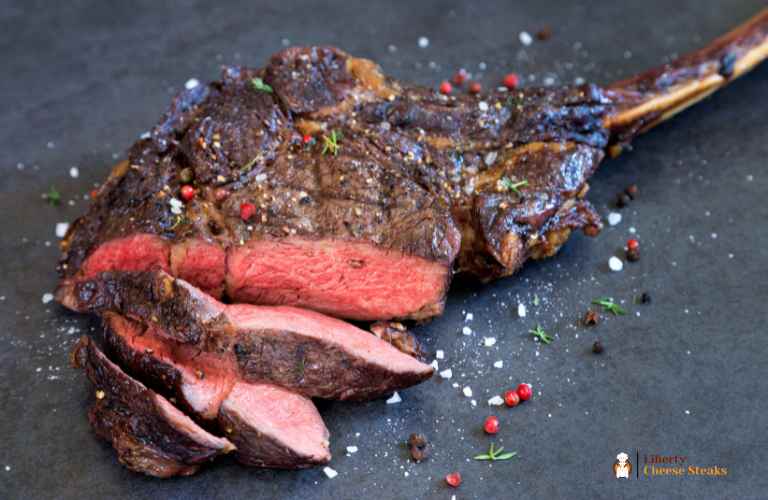When it comes to cooking a delicious steak, proper seasoning and marinating are key factors that can take your steak from ordinary to extraordinary.
Seasoning adds flavor and enhances the taste of the meat, while marinating helps tenderize the steak and infuse it with additional flavors.
In this article, we will delve into the basics of steak seasoning and marinating, providing you with a comprehensive guide to help you understand these concepts properly and create mouthwatering steaks.
Understanding Steak Seasoning
Steak seasoning refers to a blend of herbs, spices, and other flavorings that are used to enhance the taste of the meat.
The primary purpose of seasoning is to add depth, complexity, and a burst of flavors to the steak. It helps to enhance the natural flavors of the meat and create a well-rounded taste experience.
Common Ingredients in Steak Seasonings
Steak seasonings can vary widely in their composition, but there are some common ingredients you’ll often find in them. These include:
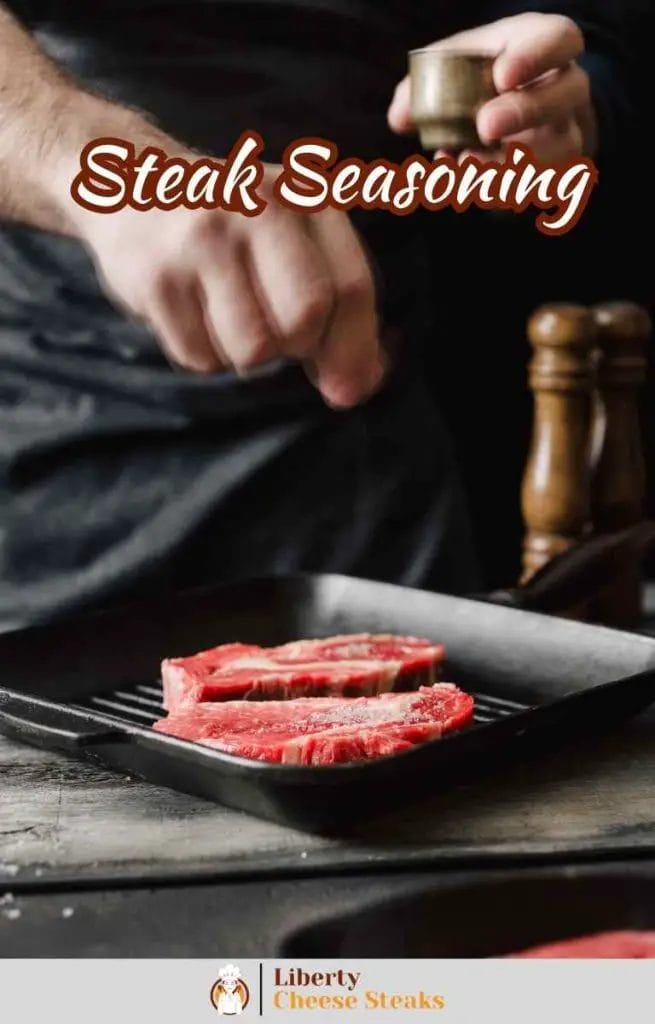
Salt:
Salt is a crucial component of steak seasoning as it helps to enhance the natural flavors of the meat and provide a balanced taste.
Pepper:
Black pepper is another staple ingredient in steak seasoning. It adds a slight heat and complements the richness of the meat.
Garlic and Onion Powder:
These powdered forms of garlic and onion add savory notes to the seasoning and contribute to the overall flavor profile.
Paprika:
Paprika adds a touch of sweetness and imparts a vibrant red color to the steak.
Herbs and Spices:
Various herbs and spices like thyme, rosemary, oregano, cayenne pepper, and cumin can be included to add unique flavor dimensions to the seasoning.
Types of Steak Seasonings
Steak seasonings are available in a variety of forms, each offering a distinct taste experience. Some popular types of steak seasonings include:
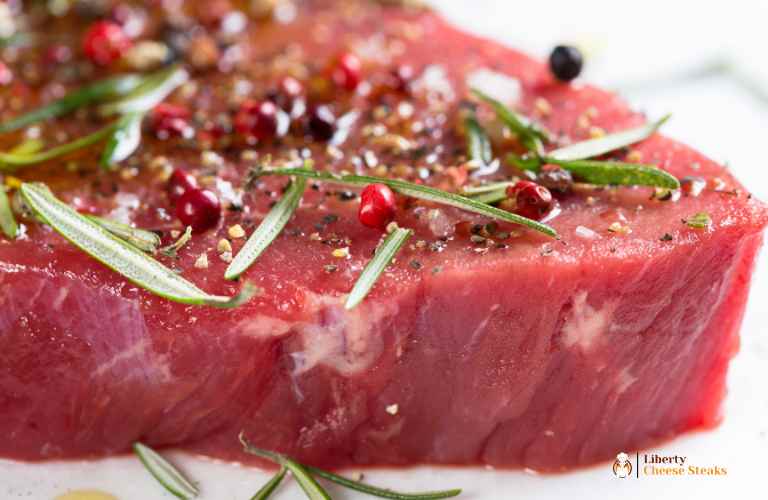
Classic Steak Seasoning:
This traditional blend typically consists of salt, pepper, garlic powder, and paprika. It is a versatile option that complements a wide range of steak cuts.
Spicy Steak Seasoning:
For those who prefer a bit of heat, spicy steak seasonings incorporate ingredients like cayenne pepper, chili powder, or crushed red pepper flakes to add a fiery kick to the steak.
Herb-Infused Steak Seasoning:
Herb-infused seasonings incorporate a medley of herbs like rosemary, thyme, and parsley. These seasonings add freshness and aromatic flavors to the steak.
Homemade Steak Seasoning Recipes
If you prefer to customize your seasoning blend or experiment with different flavors, making your own homemade steak seasoning can be a rewarding experience. Here are a few simple recipes to get you started:
Classic Steak Seasoning Recipe
Ingredients:
- 2 tablespoons kosher salt
- 1 tablespoon freshly ground black pepper
- 1 tablespoon garlic powder
- 1 tablespoon paprika
Instructions:
- In a small bowl, combine all the ingredients until well mixed.
- Store the seasoning blend in an airtight container.
- Generously apply the seasoning to both sides of the steak before cooking.
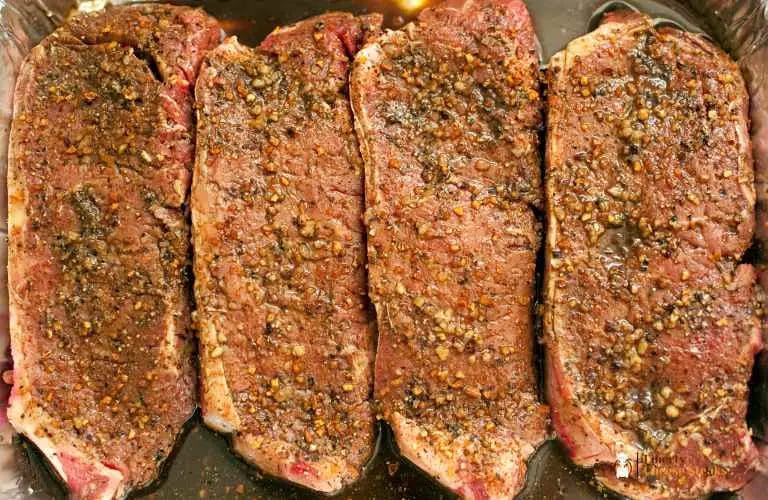
Spicy Steak Seasoning Recipe
Ingredients:
- 1 tablespoon kosher salt
- 1 tablespoon chili powder
- 1 teaspoon cayenne pepper
- 1 teaspoon garlic powder
- 1 teaspoon onion powder
Instructions:
- Mix all the ingredients in a bowl until thoroughly combined.
- Adjust the amount of cayenne pepper based on your desired level of spiciness.
- Use the seasoning to add a zesty kick to your steaks before grilling or searing.
Herb-Infused Steak Seasoning Recipe
Ingredients:
- 2 tablespoons dried rosemary
- 2 tablespoons dried thyme
- 1 tablespoon dried parsley
- 1 tablespoon kosher salt
- 1 tablespoon freshly ground black pepper
Instructions:
- In a mortar and pestle or a spice grinder, grind the dried herbs until they form a coarse powder.
- In a bowl, combine the powdered herbs with salt and pepper, mixing well.
- Sprinkle the herb-infused seasoning generously on the steak for a burst of aromatic flavors.
Mastering the Art of Steak Marinades
A steak marinade is a flavorful liquid mixture that is used to soak the steak before cooking. The marinade helps to infuse the meat with additional flavors and tenderize it by breaking down its fibers.
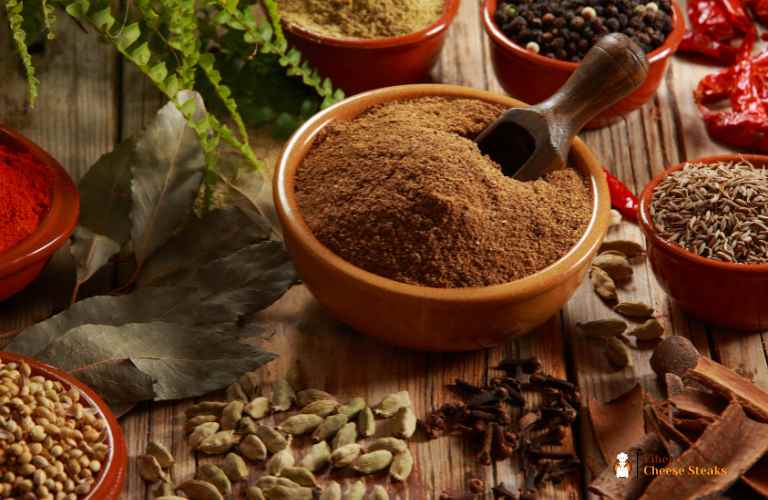
Marinades typically consist of acidic ingredients, oils or fats, seasonings, and sometimes sweeteners.
Key Components of a Good Steak Marinade
To create a delicious and effective steak marinade, it’s important to include the following key components:
Acidic Ingredient:
The acidic component in a marinade helps to tenderize the meat by breaking down its proteins.
Common acidic ingredients include citrus juices (lemon, lime, orange), vinegar, wine, or even yogurt. The acid helps to add a tangy flavor and improve the texture of the steak.
Oil or Fat:
Including oil or fat in the marinade helps to keep the steak moist during cooking and prevents it from drying out. Olive oil, vegetable oil, or even melted butter are commonly used choices.
Seasonings and Herbs:
Similar to steak seasoning, seasonings and herbs are essential in a marinade to add depth and complexity to the flavors.
Garlic, onion, herbs like rosemary, thyme, and spices like paprika, cumin, or black pepper can be used to enhance the taste.
Sweeteners:
Sweeteners like honey, brown sugar, or maple syrup can be added to balance the flavors and add a hint of sweetness to the marinade.
They can also contribute to the caramelization of the steak’s surface during cooking.
Popular Steak Marinade Recipes
Let’s explore a few popular steak marinade recipes to give you a taste of the possibilities:
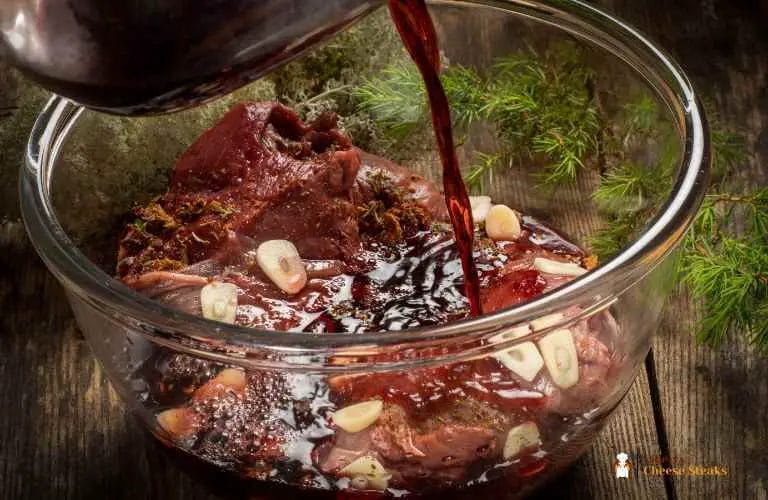
Traditional Soy-Based Marinade
Ingredients:
- ½ cup soy sauce
- ¼ cup olive oil
- 2 tablespoons Worcestershire sauce
- 2 tablespoons balsamic vinegar
- 2 cloves garlic, minced
- 1 tablespoon brown sugar
- 1 teaspoon ground black pepper
Instructions:
- In a bowl, whisk together the soy sauce, olive oil, Worcestershire sauce, balsamic vinegar, minced garlic, brown sugar, and black pepper until well combined.
- Place the steak in a resealable plastic bag or a shallow dish and pour the marinade over it.
- Ensure the steak is fully coated with the marinade, then seal the bag or cover the dish.
- Refrigerate for at least 2 hours, or preferably overnight, turning the steak occasionally to ensure even marination.
- Remove the steak from the marinade and discard the excess liquid. Pat the steak dry before cooking.
Citrus-Infused Marinade
Ingredients:
- Juice of 2 lemons
- Juice of 1 lime
- Zest of 1 orange
- ¼ cup olive oil
- 2 cloves garlic, minced
- 2 tablespoons fresh cilantro, chopped
- 1 tablespoon honey
- 1 teaspoon salt
- ½ teaspoon ground cumin
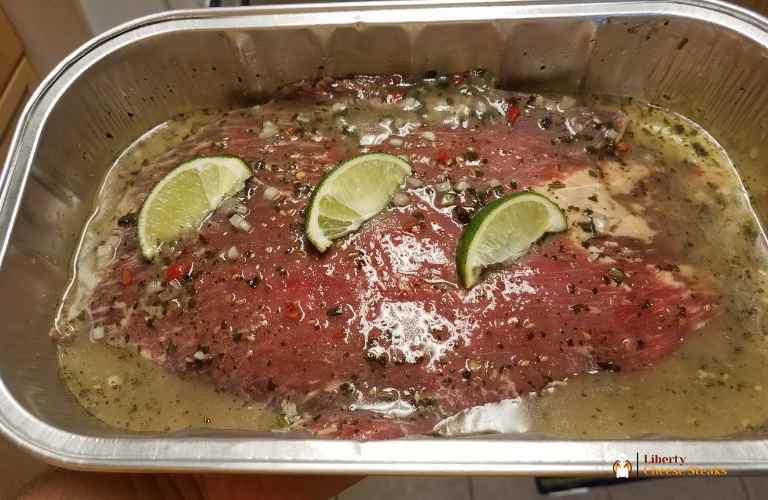
Instructions:
- In a bowl, combine the lemon juice, lime juice, orange zest, olive oil, minced garlic, chopped cilantro, honey, salt, and cumin. Mix well.
- Place the steak in a resealable plastic bag or a shallow dish and pour the marinade over it.
- Ensure the steak is fully coated with the marinade, then seal the bag or cover the dish.
- Marinate in the refrigerator for at least 1 hour, or up to 4 hours, turning the steak occasionally.
- Remove the steak from the marinade and let it come to room temperature before cooking.
Wine and Herb Marinade
Ingredients:
- ½ cup red wine (such as Cabernet Sauvignon)
- ¼ cup olive oil
- 2 cloves garlic, minced
- 2 tablespoons fresh rosemary, chopped
- 2 tablespoons fresh thyme, chopped
- 1 tablespoon Dijon mustard
- 1 teaspoon salt
- ½ teaspoon freshly ground black pepper
Instructions:
- In a bowl, combine the red wine, olive oil, minced garlic, chopped rosemary, chopped thyme, Dijon mustard, salt, and black pepper. Mix well.
- Place the steak in a resealable plastic bag or a shallow dish and pour the marinade over it.
- Ensure the steak is fully coated with the marinade, then seal the bag or cover the dish.
- Marinate in the refrigerator for at least 1 hour, or up to 6 hours, turning the steak occasionally.
- Remove the steak from the marinade and let it rest at room temperature for about 30 minutes before cooking.
Proper Techniques for Seasoning and Marinating Steak
Now that you have a good understanding of steak seasoning and marinades, let’s explore the proper techniques for applying these flavor-enhancing methods to your steaks.
Preparing the Steak for Seasoning and Marinating
Before seasoning or marinating, ensure that the steak is at room temperature. This allows for more even cooking.
Pat the steak dry with paper towels to remove any excess moisture, as this will help the seasonings or marinade adhere better.
Applying the Seasoning to the Steak
For seasoning, sprinkle the seasoning blend evenly on both sides of the steak, pressing it gently into the meat. Allow the seasoned steak to rest for a few minutes before cooking to allow the flavors to penetrate the meat.
Marinating the Steak Effectively
For marinating, place the steak in a resealable plastic bag or a shallow dish. Pour the marinade over the steak, ensuring it is fully coated.
Seal the bag or cover the dish and refrigerate. To maximize marination, turn the steak occasionally to ensure all sides come in contact with the marinade.
Duration and Temperature Considerations for Marinating
Marinating times can vary depending on the thickness and type of steak. As a general rule, marinate thinner cuts for at least 30 minutes to 2 hours, while thicker cuts can benefit from marinating for 4 to 24 hours.
However, avoid marinating steak for too long, as the acidity can break down the meat excessively and affect its texture.
Always marinate the steak in the refrigerator, as this prevents the growth of harmful bacteria. If using a marinade with acidic ingredients, such as citrus or vinegar, avoid using aluminum containers or foil, as they can react with the acid and affect the taste.
Proper Storage and Food Safety Tips
When marinating steak, always keep it refrigerated, either in the refrigerator or a cooler with ice if marinating outdoors.
Discard any leftover marinade that has come into contact with raw meat, as it may contain harmful bacteria. If you want to use the marinade for basting or as a sauce, reserve a portion of it before marinating the steak.
Grilling and Cooking Tips for Seasoned and Marinated Steak
After mastering the art of seasoning and marinating your steak, the next crucial step is to cook it to perfection. Here are some grilling and cooking tips to help you achieve the best results:
Preheating the Grill or Skillet
Whether you prefer grilling or using a skillet, preheating is essential to ensure even cooking and to create a flavorful sear on the steak.
Preheat your grill to medium-high heat or heat your skillet over medium-high heat until it’s hot.
Cooking Techniques for Various Levels of Doneness
The cooking time will depend on the thickness of the steak and the desired level of doneness. Here are some general guidelines:
- For rare steak, cook it for about 3-4 minutes per side or until the internal temperature reaches around 125°F (51°C).
- For medium-rare steak, cook it for about 4-5 minutes per side or until the internal temperature reaches around 135°F (57°C).
- For medium steak, cook it for about 5-6 minutes per side or until the internal temperature reaches around 145°F (63°C).
- For well-done steak, cook it for about 6-7 minutes per side or until the internal temperature reaches around 160°F (71°C) or higher.
Keep in mind that these are general guidelines, and the cooking time can vary depending on the thickness of the steak and the heat of your grill or skillet. It’s best to use an instant-read meat thermometer to ensure your steak reaches the desired level of doneness.
Resting and Serving the Steak
After cooking, allow the steak to rest for a few minutes, tented loosely with foil. Resting allows the juices to redistribute and results in a more tender and flavorful steak. Serve the steak whole or slice it against the grain before serving.
Flavor-Enhancing Accompaniments and Sauces
To elevate the flavors of your seasoned and marinated steak, consider serving it with various accompaniments and sauces.
Some popular choices include chimichurri sauce, garlic butter, blue cheese crumbles, sautéed mushrooms, or caramelized onions. These additions can complement and enhance the taste of the steak, adding an extra layer of deliciousness.
Conclusion
Understanding the basics of steak seasoning and marinating is essential for creating mouthwatering steaks that are bursting with flavor.
Seasoning adds depth and enhances the taste of the meat, while marinating tenderizes the steak and infuses it with additional flavors.
By following proper techniques, experimenting with different seasonings and marinades, and using the right cooking methods, you can elevate your steak-cooking game and create delectable meals that will impress family and friends.
So, grab your seasonings and marinades, fire up the grill or heat up the skillet, and get ready to savor the deliciousness of perfectly seasoned and marinated steak.
Frequently Asked Questions (FAQs)
How long should I marinate the steak?
The marinating time depends on the thickness and type of steak. Thinner cuts benefit from marinating for at least 30 minutes to 2 hours, while thicker cuts can be marinated for 4 to 24 hours. Avoid marinating steak for too long, as the acid in the marinade can break down the meat excessively.
Can I reuse marinade?
It’s generally not recommended to reuse marinade that has come into contact with raw meat. It may contain bacteria from the raw meat, and reusing it can lead to foodborne illness. If you want to use the marinade for basting or as a sauce, reserve a portion of it before marinating the steak.
What if I don’t have time to marinate the steak?
If you’re short on time, you can still achieve flavorful results by using a dry rub or a quick marinade. Dry rubs are seasoning blends that are applied directly to the steak before cooking.
Alternatively, you can create a quick marinade by allowing the steak to sit in the marinade for 15 to 30 minutes before cooking.
Can I use the same seasoning for different cuts of steak?
Absolutely! The same seasoning blend can be used for different cuts of steak. However, keep in mind that different cuts have varying levels of tenderness and flavor profiles, so you may want to adjust the cooking time accordingly.
Can I season the steak right before cooking, or should I season it in advance?
While you can season the steak right before cooking, it’s generally recommended to season it in advance.
This allows the flavors to penetrate the meat and enhance its taste. Seasoning the steak at least 30 minutes before cooking, or even overnight, can result in more flavorful and well-seasoned meat.
Is it necessary to marinate the steak, or can I simply season it?
Marinating is not always necessary, especially for tender cuts of steak. Seasoning alone can still provide excellent flavor.
However, marinating can add extra moisture, tenderness, and flavor to tougher cuts of meat. It’s a personal preference, and you can choose to marinate or simply season based on the desired outcome and the cut of steak you’re using.
Can I use the same marinade for different types of meat, like chicken or pork?
While some marinades can work well with various types of meat, it’s important to consider the flavor profile and characteristics of each protein.
Different meats have different textures and flavors, so it’s recommended to use marinades that complement the specific meat you’re cooking. You can experiment with different marinades to find your preferred combinations.
Can I marinate frozen steak?
It’s generally best to thaw the steak before marinating it. Thawing allows the marinade to penetrate the meat more effectively and ensures even cooking.
If you need to marinate a frozen steak due to time constraints, you can place it in the marinade and let it marinate in the refrigerator while it thaws. However, keep in mind that the marinade’s effectiveness may be slightly reduced.
Should I rinse off the marinade before cooking the steak?
It’s generally recommended to remove excess marinade from the steak before cooking. However, you don’t need to rinse off the marinade completely. Simply shake off any excess marinade and let it drip off the steak.
This prevents excessive flare-ups on the grill or excess moisture in the pan, allowing for better searing and caramelization.
Can I use the leftover marinade as a sauce for the cooked steak?
It’s generally not recommended to use the leftover marinade that has come into contact with raw meat as a sauce.
The marinade may contain harmful bacteria from the raw meat, which can lead to foodborne illnesses if consumed without cooking. If you want to use the marinade as a sauce, reserve a portion of it before marinating the steak and cook it separately to ensure food safety.
Can I reuse leftover seasoning from the steak?
If the seasoning hasn’t come into contact with raw meat or been contaminated, you can safely store it and reuse it for future meals. Ensure that the seasoning is stored in an airtight container in a cool, dry place to maintain its freshness and flavor.
However, if the seasoning has been in contact with raw meat or has been sitting for a prolonged period, it’s best to discard it and use fresh seasoning for optimal taste.
How can I prevent the steak from becoming too salty when using a seasoning blend?
To avoid an overly salty steak, it’s important to use the appropriate amount of seasoning for the size of the steak.
Follow the recommended measurements in the seasoning recipe or adjust to your taste preferences.
Additionally, consider using kosher salt or sea salt, which are less salty than table salt. It’s always easier to add more seasoning later if needed, but it’s challenging to reduce the saltiness once it has been added.
Can I season and marinate the steak at the same time?
Yes, you can season and marinate the steak at the same time. Simply apply the seasoning blend to the steak and then place it in the marinade.
This allows the flavors from the seasoning to complement and enhance the marinade’s flavors, resulting in a more robust taste.
How long can I keep marinated steak in the refrigerator before cooking?
It’s generally safe to keep marinated steak in the refrigerator for up to 2 days before cooking. However, the optimal marinating time varies depending on the thickness and type of steak.
Thicker cuts can benefit from longer marination, while thinner cuts may only require a shorter time. Always check the recommended marinating time for the specific recipe you’re following.
Can I season and marinate a steak that has already been cooked?
Seasoning and marinating are typically done before cooking to enhance the flavor and tenderness of the raw meat. Once a steak is cooked, it’s not necessary to season or marinate it again.
However, you can still use a seasoning or sauce to add extra flavor to the cooked steak, such as sprinkling it with a dry rub or brushing it with a glaze or sauce.
Can I adjust the ingredients in a marinade or seasoning recipe to suit my taste preferences?
Absolutely! The great thing about seasoning and marinating is that you can customize the flavors to your liking. Feel free to adjust the ingredients in a recipe based on your taste preferences.
Add more or less of a particular seasoning or spice, increase or decrease the acidity or sweetness, and experiment with different herbs and spices until you find the perfect balance for your palate.
Can I use a pre-made steak seasoning or marinade from the store?
Yes, pre-made steak seasonings and marinades from the store can be convenient options when you’re short on time or looking for specific flavor profiles.
Be sure to read the labels to check for any allergens or ingredients you may want to avoid. You can also use store-bought seasonings as a base and customize them by adding additional herbs or spices to suit your taste.

